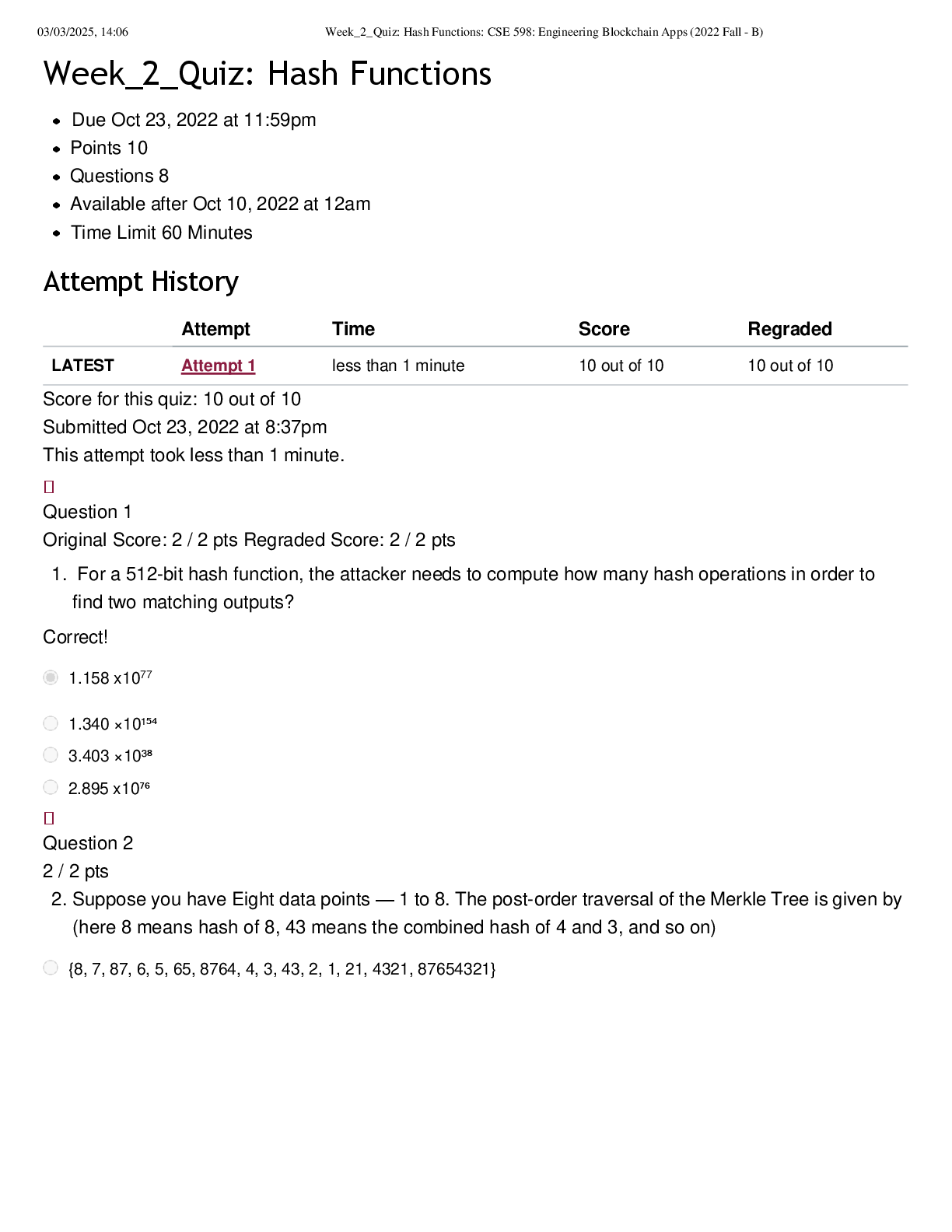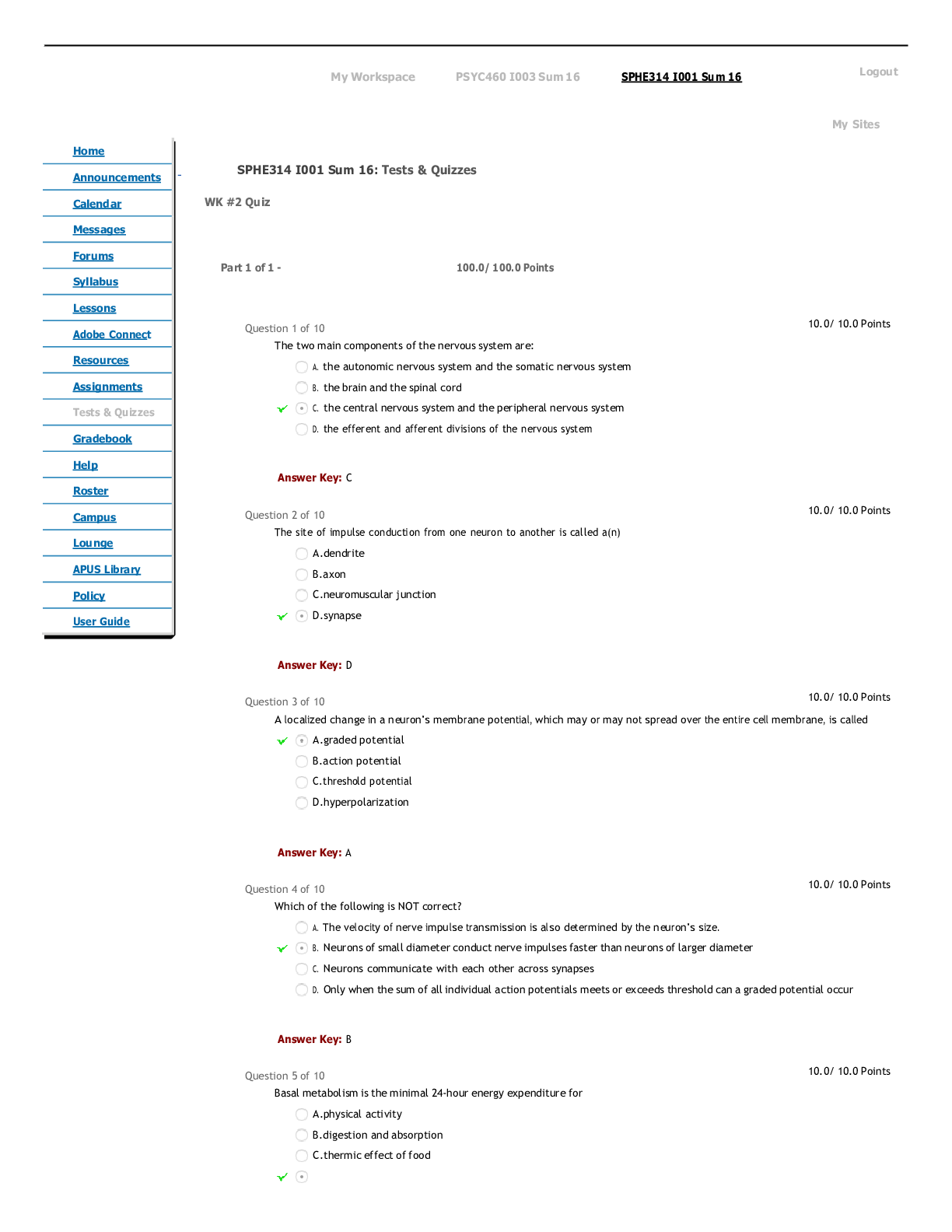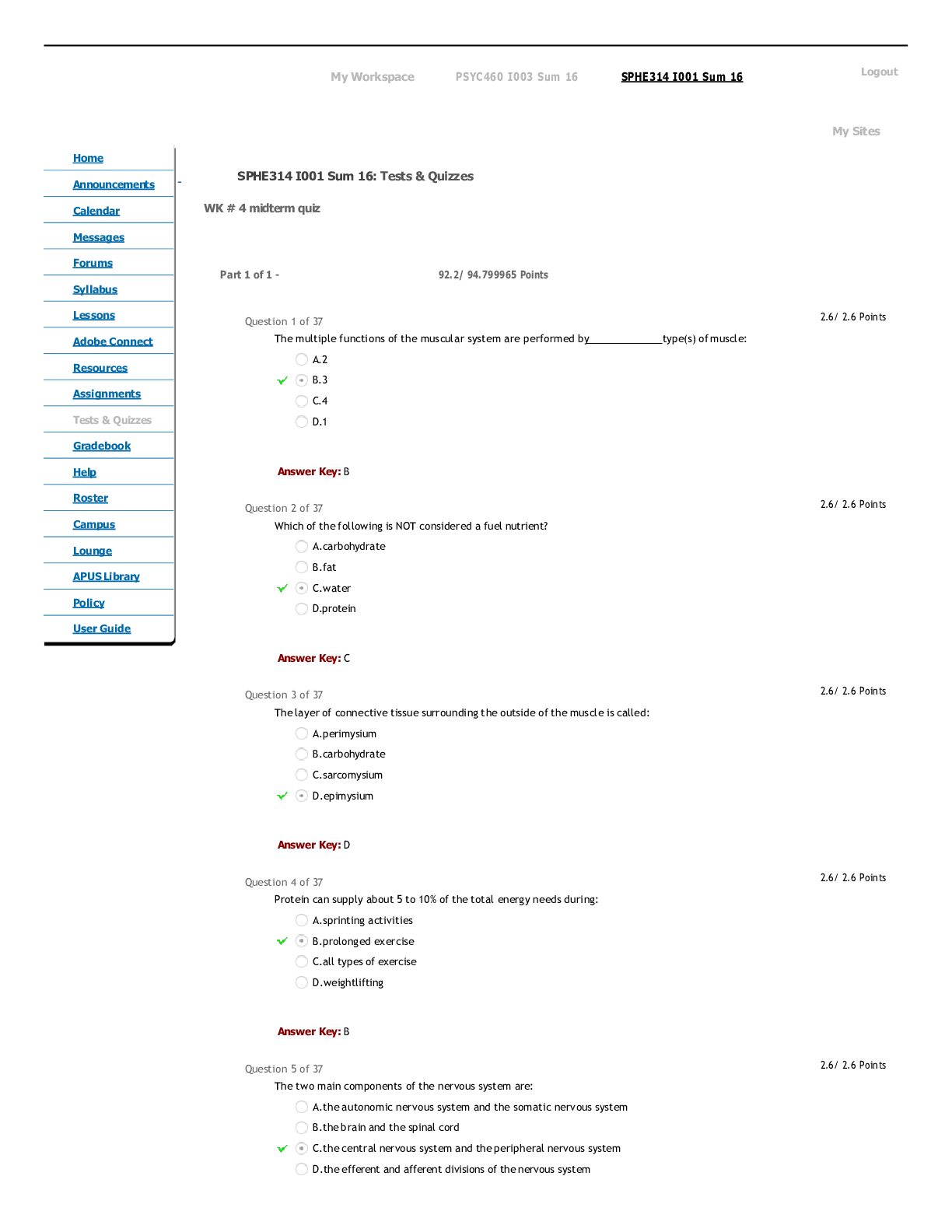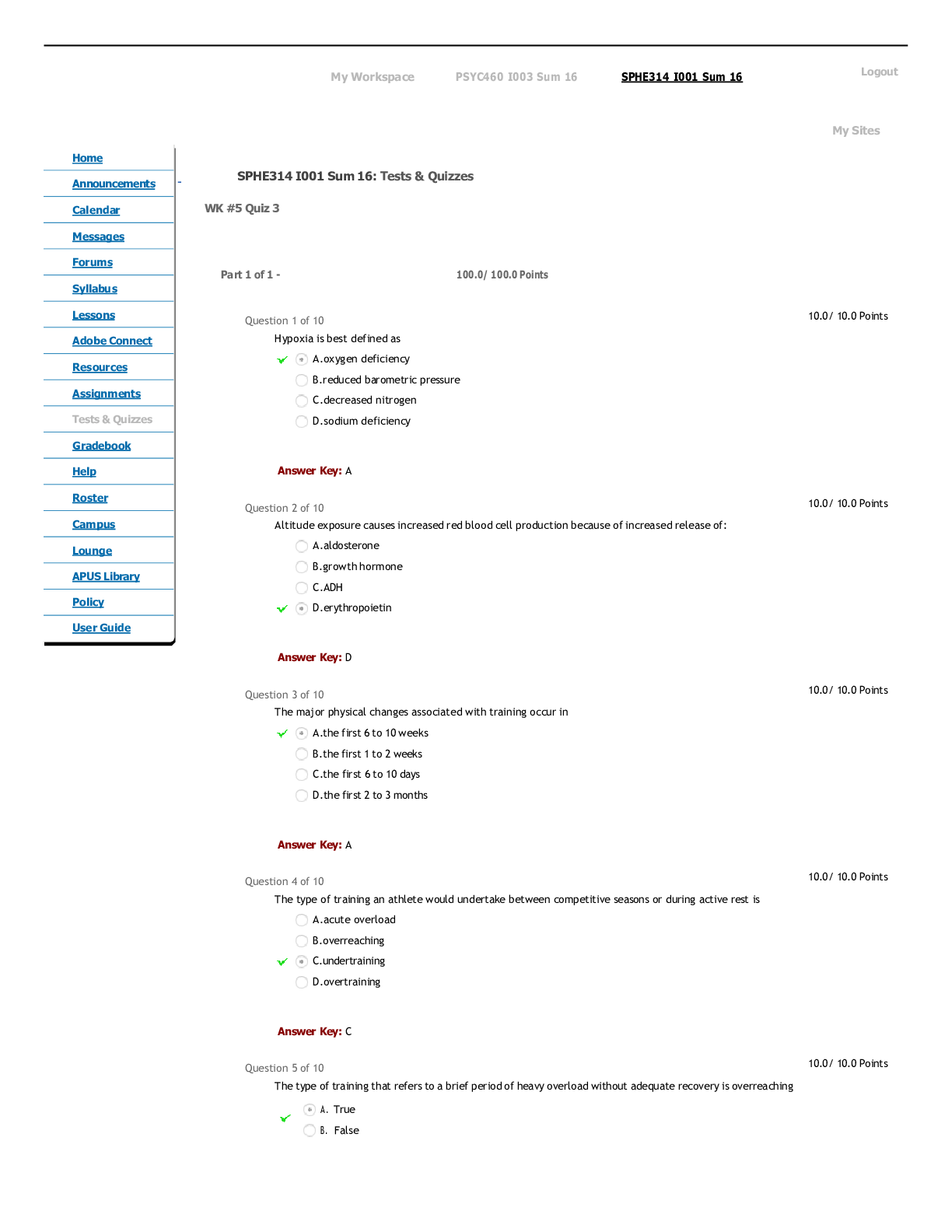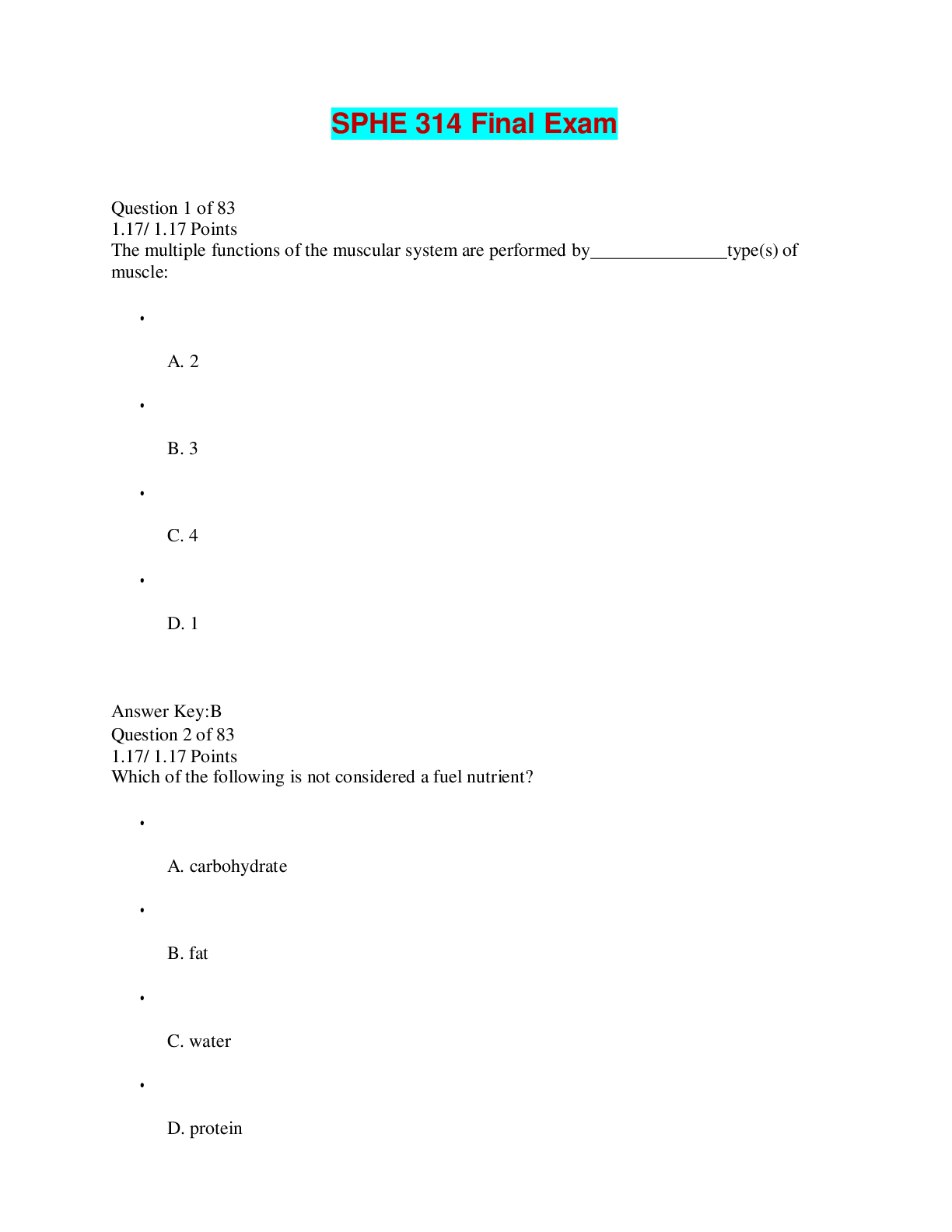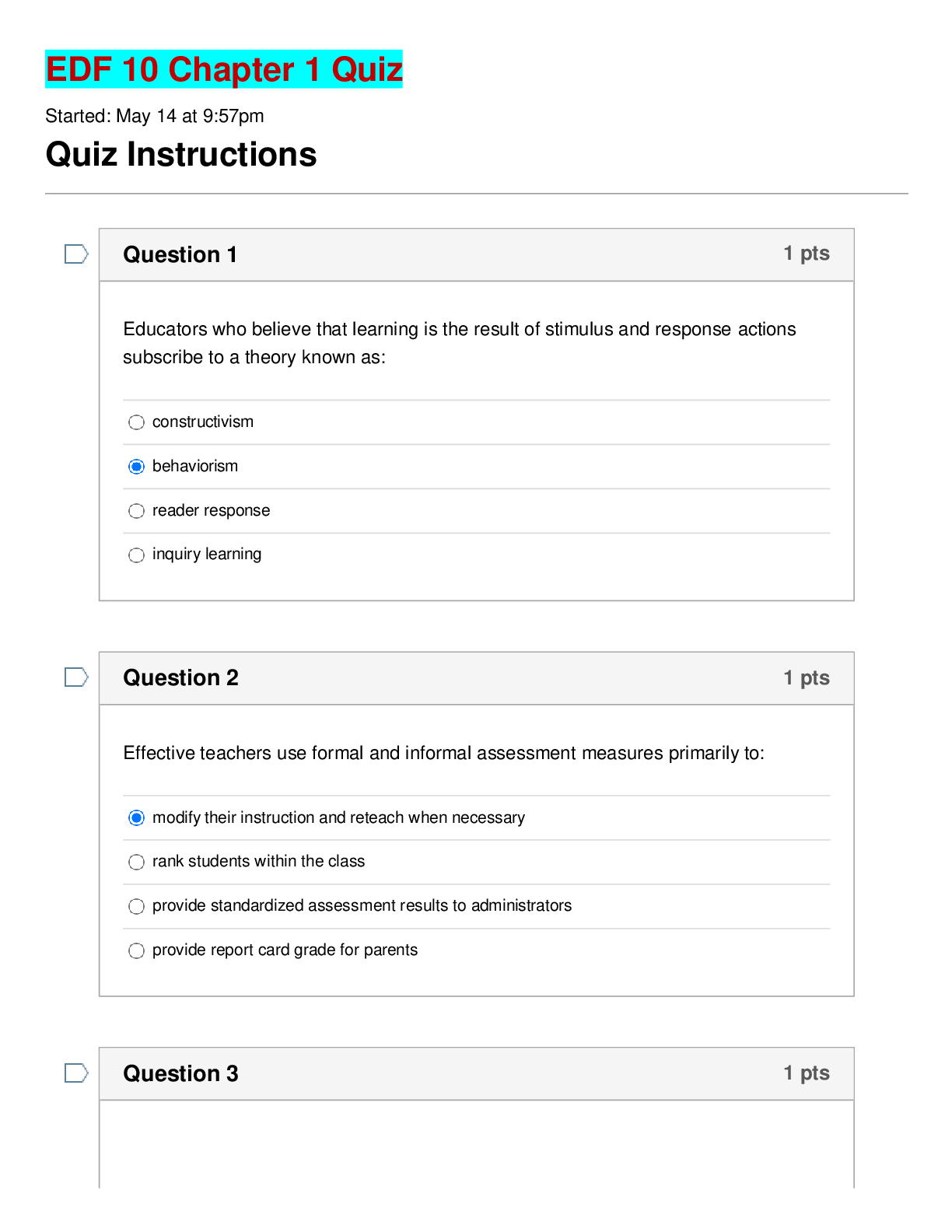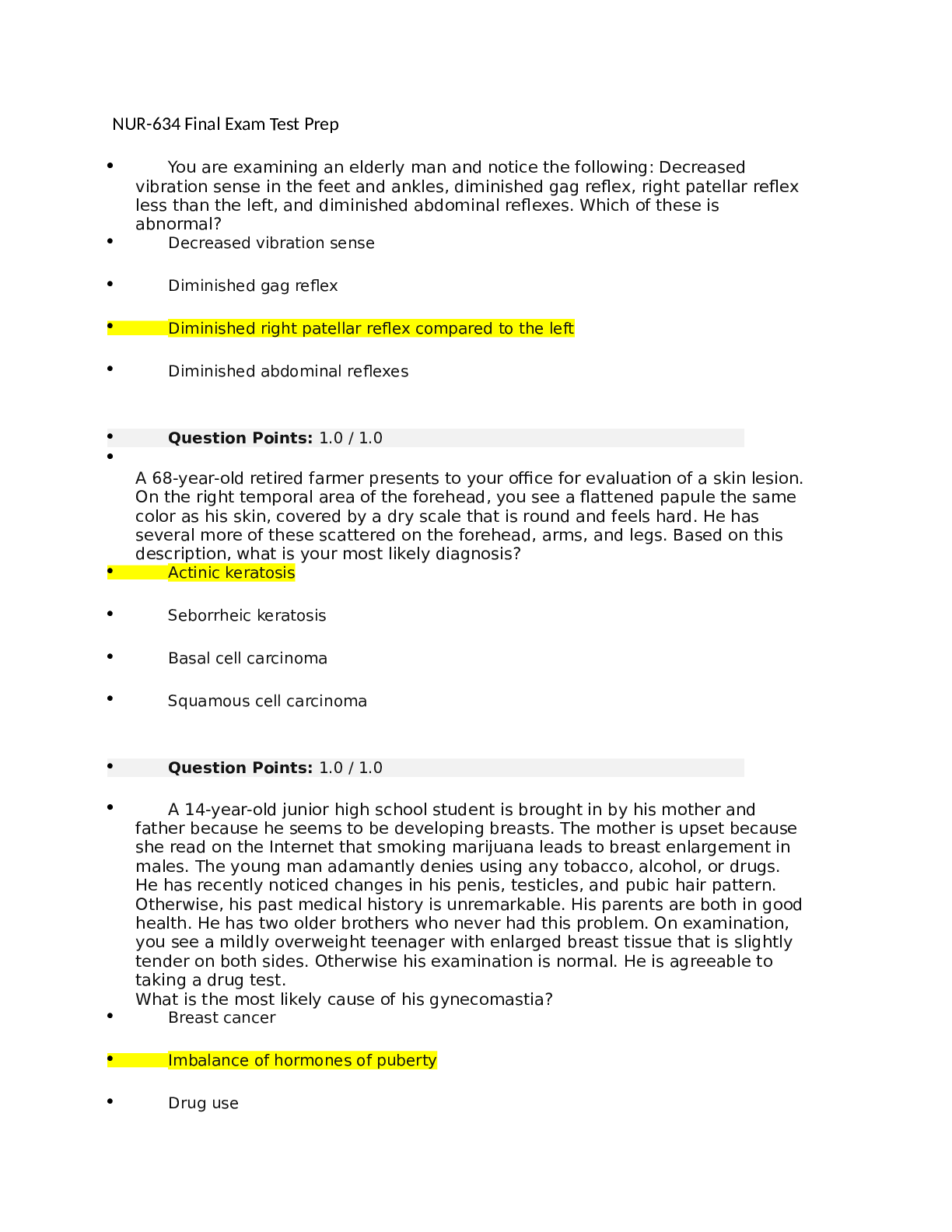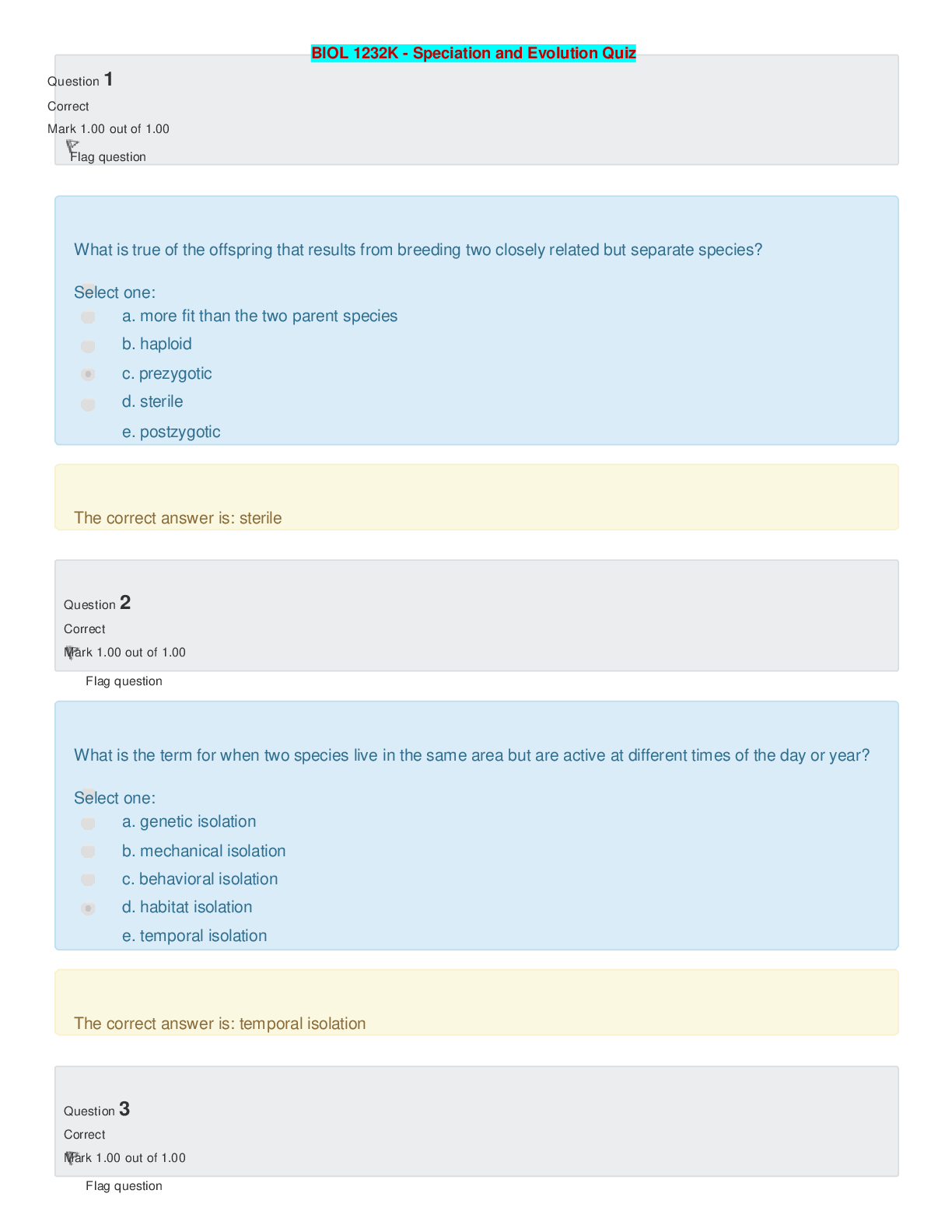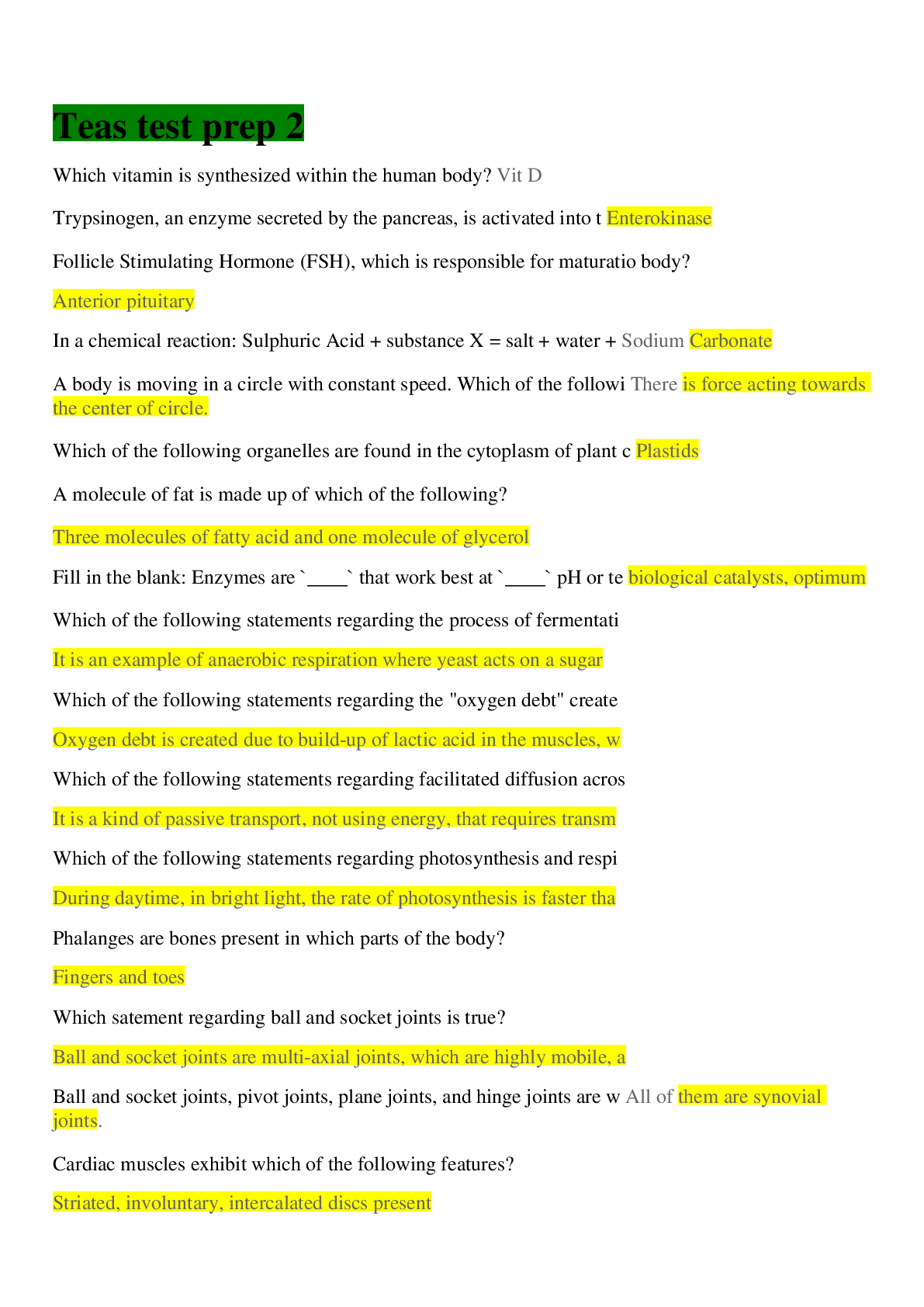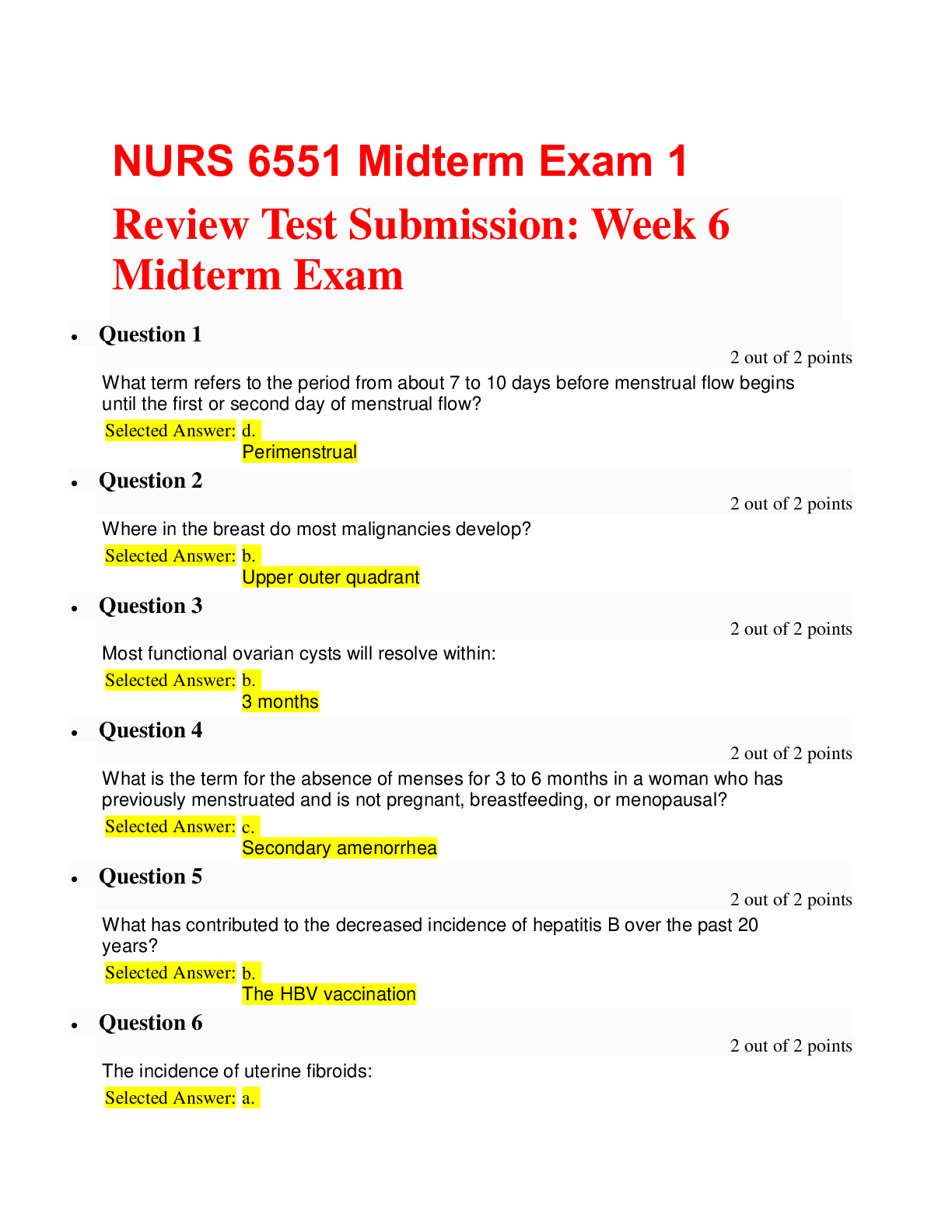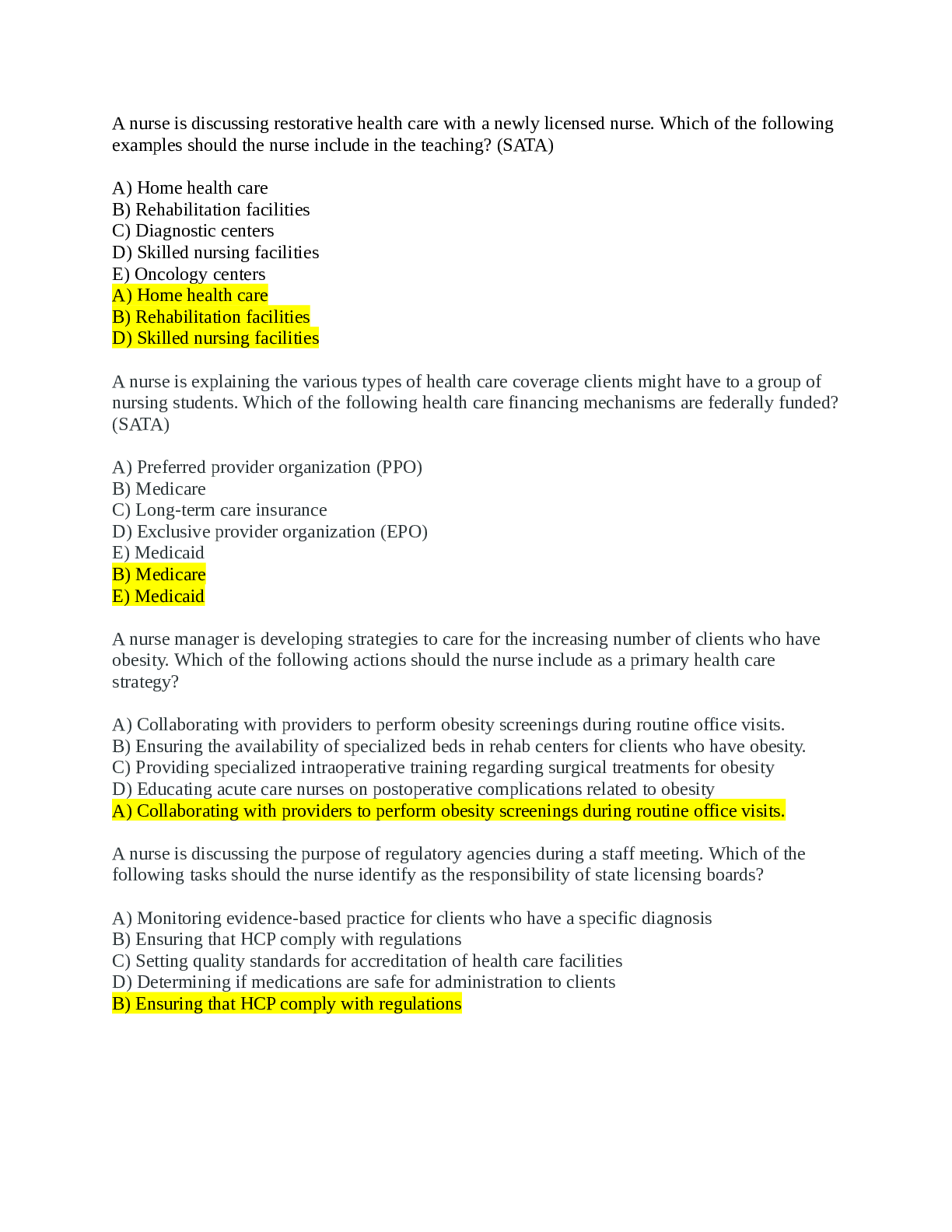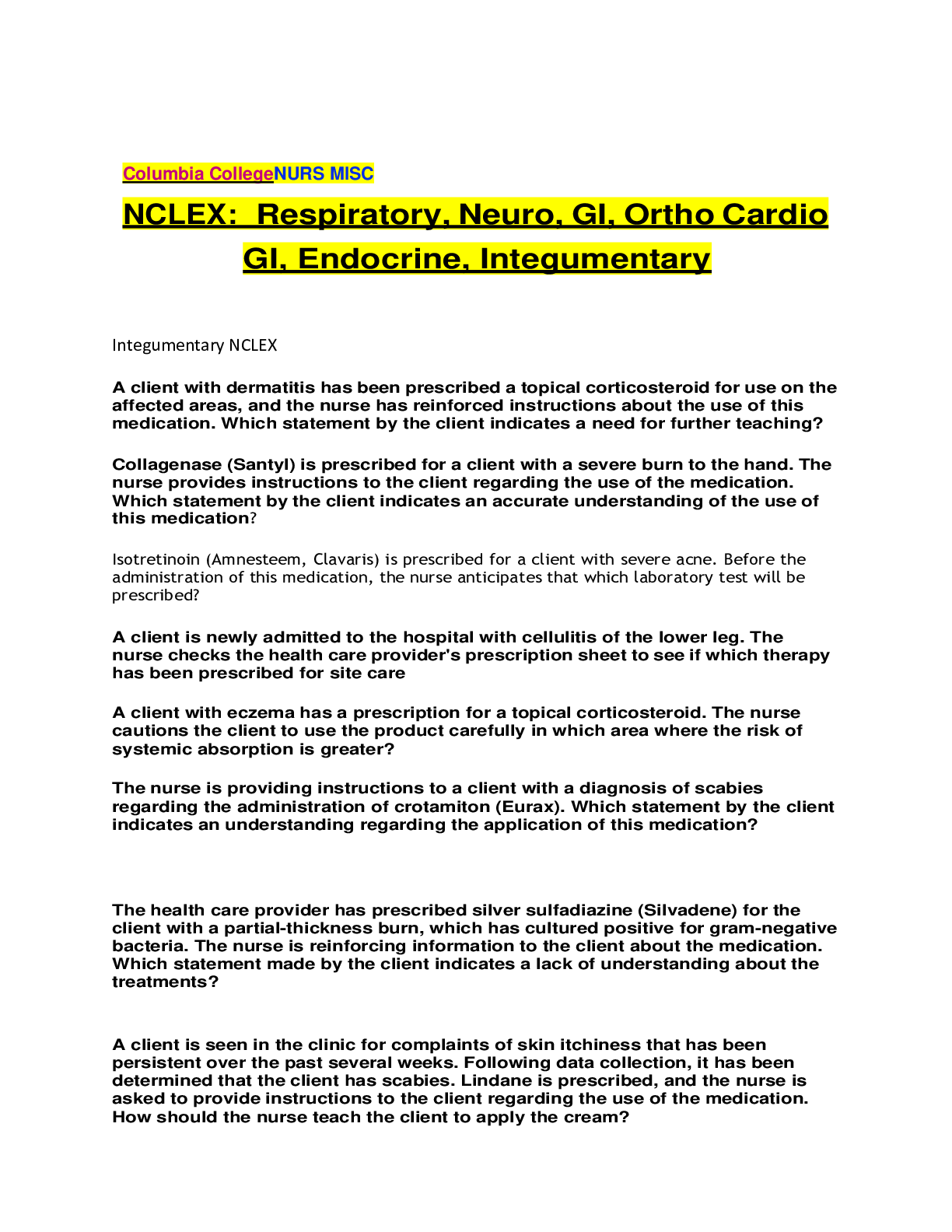Operations Management > EXAM > Operations Management Exam | Verified with 100% Correct Answers (All)
Operations Management Exam | Verified with 100% Correct Answers
Document Content and Description Below
Operations Management Exam | Verified with 100% Correct Answers Why is operations management a more encompassing term than production management? A. Operations management is concerned with multiple... products and services B. Operations management refers to service as well as manufacturing organizations C. Operations management is broader including the financing and marketing functions D. Operations management makes use of the tools of quantitative analysis and computer systems Which of the following functions is responsible for the actual movement of goods and/or services across organizations? A. Logistics B. Operations C. Purchasing D. None of these The four decision areas in operations management are: A. Planning, technology, inventory, and control B. Process, quality, capacity, and inventory C. Process, quality, technology, and capacity D. None of these A productive systems approach: A. Views operations as a separate organizational function B. Must provide feedback information for control of process inputs and technology C. Is of limited use in service organizations D. Disregards human and social concerns Capacity decisions: A. Include staffing and scheduling B. Include inventory control C. Include defining product specifications D. None of these Inventory decisions involve: A. Determining what to order, how much to order, and when to order B. Tracking the flow of materials C. Managing the finished goods inventories D. All of these The contemporary operations themes signify that: A. More emphasis should be placed on manufacturing than on service industries B. Every operation should be externally directed to meet the customers' requirements C. Operations decisions should precede decisions in other functions in an organization D. To be competitive, strategies for operations should exclude broader supply chain issues The essence of operations management can be described by: A. Process, capacity, and people B. Decisions, function, and process C. Planning, control, and organization D. Integrated planning and control Which of the following is not a contemporary theme in operations? A. Globalization of Operations B. Lean Operations C. Quality Teams D. Environmental Concerns and Sustainability The three primary functions that exist in most business organizations are: A. Operations, accounting, and finance B. Operations, production, and finance C. Production, marketing, and human resources D. Operations, finance, and marketing The three major functions of business organizations: A. Are mutually exclusive B. Function independently of each other C. Interface with each other D. Do not interface with each other The four major decision responsibilities of operations management are: A. Process, quality, capacity, and human resources B. Process, quality, human resources, and inventory C. Quality, inventory, human resources, and capacity D. Process, capacity, quality, and inventory Which of the following is not in the process category of the operations decision framework? A. Layout of the facility B. Job design C. The type of equipment and technology D. Product or service inspection Supply chain management includes the integration of: A. Suppliers B. Manufacturers C. Customers D. All of the above The supply chain extends from: A. Supplier to manufacturing B. Supplier to supplier C. Dealer to customer D. Supplier to customer Supply chain management includes all of the following except: A. Purchasing B. Inventory control C. Advertising D. Customer service A comprehensive decision-making framework for operations includes: A. Consideration of other organizational functions B. Consideration of operations in isolation of other functions C. Suppliers but not customers D. Customers but not suppliers The transformation view of the Operations function provides a unified approach for studying the manufacturing and service industries. True The process view provides a basis for viewing an entire business as a system of interconnected processes. True "Lean Operations" refers to the task of reducing the defect rates in a firm's products or services. False As price increases and benefits remain constant, the value of a product increases. False Best practices in operations are best for all organizations. False At Disney, "making people happy" is an example of: A. Operations Mission B. Corporate Strategy C. Business Strategy D. Operations Strategy The four elements that form the heart of operations strategy include: A. Mission, distinctive competence, objectives, and internal analysis B. Mission, distinctive competence, internal analysis, and external analysis C. Mission, objectives, internal analysis, and external analysis D. Mission, distinctive competence, objectives, and strategic decisions The four common objectives of operations are: A. Quality, delivery, cost, and innovation B. Quality, cost, flexibility, and agility C. Quality, cost, delivery, and flexibility D. Cost, quality, capacity, and flexibility An example under the capacity area of strategic decisions in operations would be: A. Centralize or decentralized warehouse B. One large or several small facilities C. Handmade or machine-made D. High levels or low levels of inventory The operation objectives of quality, cost, delivery, and flexibility are: A. Mutually exclusive B. Independent of each other C. Connected D. Unique In the product imitator strategy, the order winner is usually ____, while in the product innovator strategy, the order winner is usually _____. A. Flexibility, price B. Flexibility, quality C. Quality, price D. Price, flexibility Make or buy is an example of what type of strategic decision? A. Inventory B. Process C. Quality D. Capacity Which of the following is NOT a characteristic of a global corporation? A. Facilities and plants are located on a country-by-country basis. B. Global product design and process technology are used. C. Logistics and inventory control systems are global in nature. D. Organized into divisions that have global responsibility for the marketing, R&D, and operations functions. Which of the following illustrates a distinctive competence? A. Patented technology B. A successful business strategy C. Ten applications for each open position D. Low cost production Supply Chain Strategy focuses, in part, on: A. Purchasing and logistics B. Customers C. Information flow D. All of the above A decision is made that suppliers will be chosen based on quality rather than cost. This is an example of which of the following? A. Objective B. Mission C. Distinctive Competence D. Strategic decision Next year's goal is to fill 99% of all orders from stock. This is an example of which of the following? A. Objective B. Mission C. Distinctive competence D. Strategic decision Which of the following statements about operations objectives is NOT true? A. Focusing attention on improving quality frequently results in lower costs B. Reducing costs often causes improvement in quality C. Each of the operations objectives can be improved nearly simultaneously D. Reducing the time necessary to produce and deliver a product will result in greater flexibility Which of the following is NOT a characteristic of a distinctive competence? A. Could be based on human resources that are difficult to imitate. B. Could be based on proprietary technology. C. Cannot be copied easily. D. None of the above. A global corporation has which of the following characteristics? A. A separate subsidiary or division for each country where it does business. B. Demand based on a worldwide versus a local basis. C. Products designed for each individual marketplace. D. Both a and c. McDonald's distinctive competence has changed over time from continuous improvement of the transformation system and brand to the unique service and supply chain transformation system. False A corporate strategy drives the business strategy, which in turn drives the operations strategy in an organization. True The business strategy can be derived from a firm's distinctive competence that is difficult for competitors to copy or imitate. True Imitative products have low profit margins and fairly predictable demand. True The market-pull view of new product innovation is to: A. "Pull" the products into the market as fast as possible B. Develop products that the company can sell, based on customer needs C. Market whatever the company makes best D. Make new products appealing through innovative packaging Which of the following is NOT part of the new-product development process? A. Concept development B. Product design C. Development of the marketing strategy D. Pilot production/testing An example of a prototype is: A. A military aircraft B. The personal computer C. A Broadway play D. The original McDonald's restaurant Process design: A. Is the way new product ideas are developed B. Is the next stage after product design C. Is considered less important to a company than product design D. Should occur at the same time as product design Modular design involves: A. Dividing the production process into separate work units B. Dividing the products into product lines C. Dividing the products into their similar components D. Dividing the products into different cost categories Three typical misalignments between product design and operations are: A. Technology, reward systems, and infrastructure B. Technology, process, and design C. Technology, culture, and hierarchy D. None of the above Quality Function Deployment: A. Links customer requirements to technical specifications B. Eliminates customer attributes C. Depends only on engineering characteristics D. Assumes that interactions between engineering characteristics are unimportant The concept that a product should not only fit the market needs but have a technical advantage as well is known as the: A. Market pull approach to new-product introduction B. Technology push approach to new-product introduction C. Interfunctional view to new-product introduction D. Dual approach to new-product introduction In which phase of the new-product design process should considerations about tradeoffs among product cost, quality, and schedule be made? A. Concept development B. Product design C. Preliminary process design D. Pilot production/testing [Show More]
Last updated: 5 months ago
Preview 5 out of 24 pages

Loading document previews ...
Buy this document to get the full access instantly
Instant Download Access after purchase
Buy NowInstant download
We Accept:

Reviews( 0 )
$15.00
Can't find what you want? Try our AI powered Search
Document information
Connected school, study & course
About the document
Uploaded On
Jan 14, 2025
Number of pages
24
Written in
Additional information
This document has been written for:
Uploaded
Jan 14, 2025
Downloads
0
Views
10



